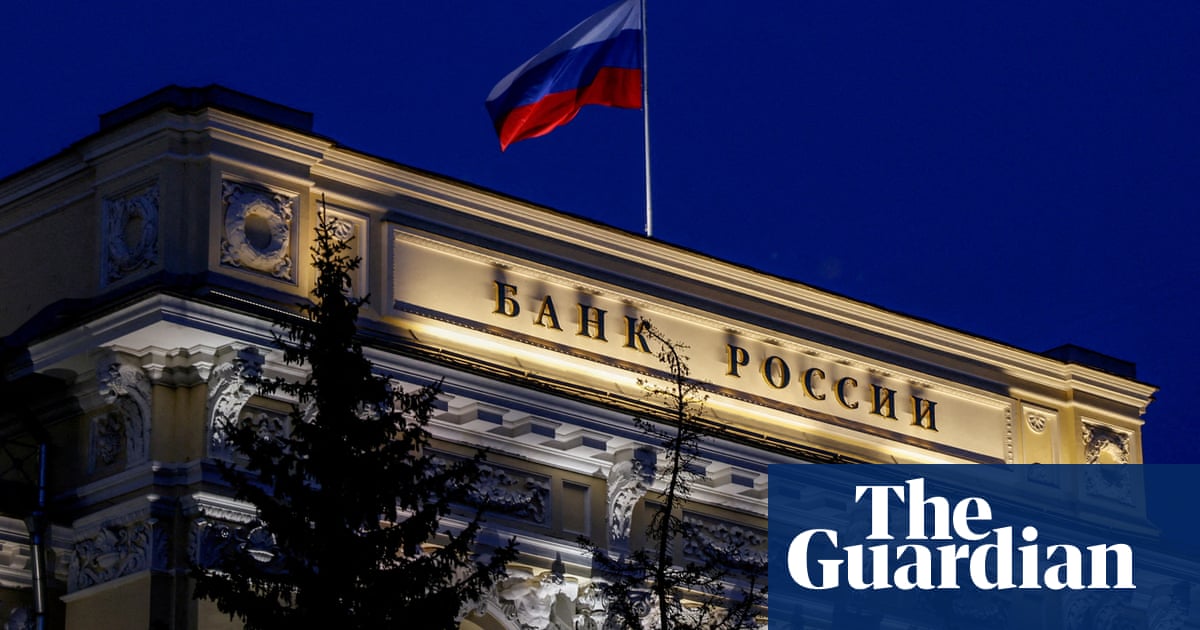
Russia’s central bank has increased interest rates by more than expected, to 15%, after a steep rise in inflation.
The bank blamed the war-torn economy’s limited capacity to respond to an increase in consumer demand for the rise in inflation to 6.6% in October, from 6% in the previous month.
Even with the increase in borrowing costs, inflation is expected to carry on climbing to 7.5% by the end of the year, the central bank said, before falling back to 4% next year.
“Current inflationary pressures have significantly increased to a level above the Bank of Russia’s expectations,” the bank said. “Higher inflationary pressures are seen across an increasingly broader range of goods and services. This means that a steady rise in domestic demand is progressively exceeding the capabilities to expand the production of goods and the provision of services. These conditions boost businesses’ appetite to pass higher costs on to consumers, which is driven among others by the weakening of the rouble and labour shortages.”
Seasonally adjusted price growth – a measure of rising prices that indicates the underlying pressures facing Russian businesses – averaged 12.1% in annualised terms in the third quarter, up from 5.1% in the three months to the end of June.
Nevertheless, the two-point increase surprised analysts, who had expected a one percentage point rise.
With much of Russia’s manufacturing production geared towards the war effort after its invasion of Ukraine in February 2022, the economy remains unable to respond to a rise in private consumer spending, which has spent most of the last 18 months about 10% below levels seen before the invasion.
The central bank governor, Elvira Nabiullina, said that while the situation in the Middle East had clouded the outlook, she had no choice but to counteract the inflationary effect of Moscow’s budget increases.
Earlier this month the rouble slumped to 102 for each $1, before the imposition of capital controls on the flow of roubles leaving Russia triggered a recovery to 93 roubles this week.
The depressed value of the currency has increased the cost of imports and provided another impetus for rising prices. Before the invasion of Ukraine, 75 roubles could buy $1.
Russia’s GDP will expand by 2.2% this year, according to the International Monetary Fund’s most recent prediction. Much of the increase follows a surge in spending on equipment for the military.
The defence budget has risen to an equivalent of 3.9% of GDP this year, from 2.7% in 2021, the year before the invasion of Ukraine. It will jump by more than 70% in 2024, reaching about 6% of GDP, according to Reuters’ assessment of official plans.
Consumers have more to spend after an increase by Moscow in welfare benefit payments to families and older people, seen by many analysts as an effort by Vladimir Putin to shore up domestic support for the war.
Putin has greater funds after a 70% increase in gas prices over the past three months and a rise in oil prices.
The National Bank of Ukraine was able this month to cut interest rates by four percentage points to 16%, deeper than the 18% forecast in a Bloomberg survey.
After collapsing by almost 30% last year following Russia’s attack, Ukraine’s gross domestic product will climb 4.9% in 2023, up from a forecast of 2.9%, the central bank said.












